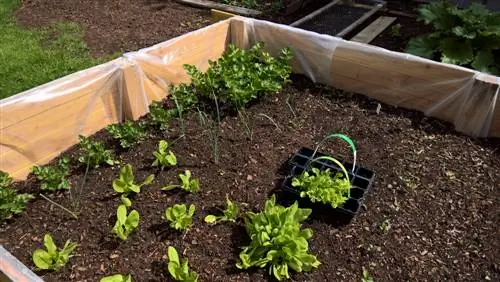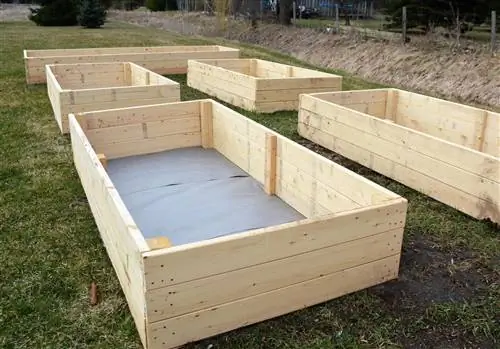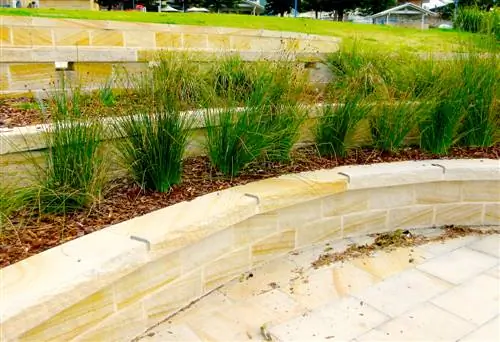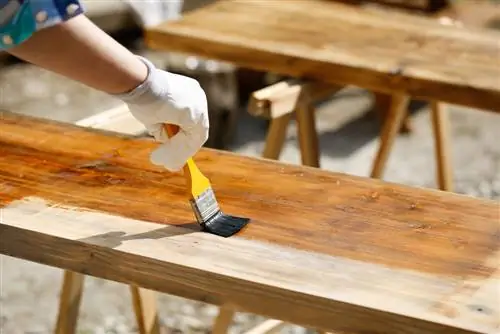- Author admin [email protected].
- Public 2023-12-16 16:46.
- Last modified 2025-06-01 06:02.
Since the filling material of a conventional compost raised bed rots over the course of the gardening year - i.e. coarse materials first become compost and later fine compost soil - the bed loses an average of between 20 and 30 centimeters in height. As a result, the vegetables are so deep in the bed box that they no longer get enough light and air. It is usually advisable to refill in good time.

How can I refill my raised bed correctly?
To refill a raised bed in autumn, push the fine potting soil aside, pour in compostable material such as grass cuttings, lawn sod, stable manure or coarse compost, distribute it evenly and pour the potting soil over it. Then mulch the bed with leaves or similar material.
Is refilling actually necessary?
So the gardener should fill fresh compost material into the sagged raised bed in autumn so that the original level is reached again by spring. Some people simply add fresh compost from the garden store or their own composter. In fact, this measure only makes sense for ergonomic reasons - i.e. for a comfortable working position on the raised bed. However, refilling is not absolutely necessary for the planting and the plants themselves - nutrients are still abundant in the compressed filling.
Refill the raised bed - step-by-step instructions
If you want to refill your raised bed, you have two options. The easy way is to take ready-made compost soil and simply spread it on the bed as the top layer. However, the following method, which is carried out after clearing the bed in autumn, is more common:
- Use a rake to push aside the fine potting soil on the raised bed.
- Fill with compostable material as an underlying layer.
- Grass clippings, lawn sod (turn over!), stable manure (especially horse manure) and coarse compost are particularly suitable.
- Spread the potting soil over it again and mulch the bed, for example with leaves.
The raised bed can rest until spring and then be replanted. So that it doesn't lose too much height over the growing season, you should mulch it regularly during the summer months - this way it will practically replenish itself.
Alternative to refill
Instead of refilling the raised bed every year, you can simply let things take their course - and instead build the raised bed box in such a way that, if necessary, you can simply remove individual wooden slats starting from the top. In this way you can adjust the height of the raised bed to its filling level. A particularly practical option is to simply place two such raised bed boxes next to each other and use them alternately for planting and filling. One box is used as a composter for a year, while the other - filled - is planted. Finally, the following year there will be an exchange.
Tip
Regardless of whether you refill the raised bed regularly or not: every four to five years the contents must be completely composted and you have to set it up from scratch.






